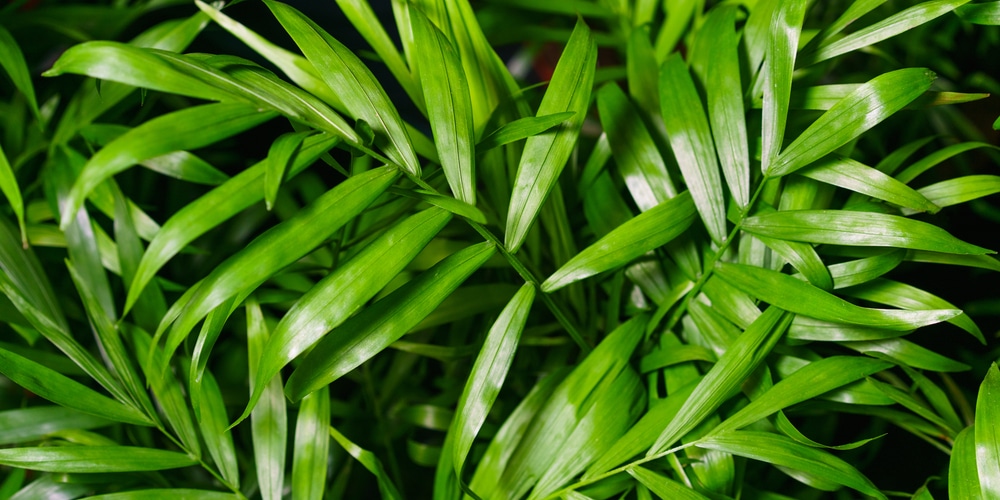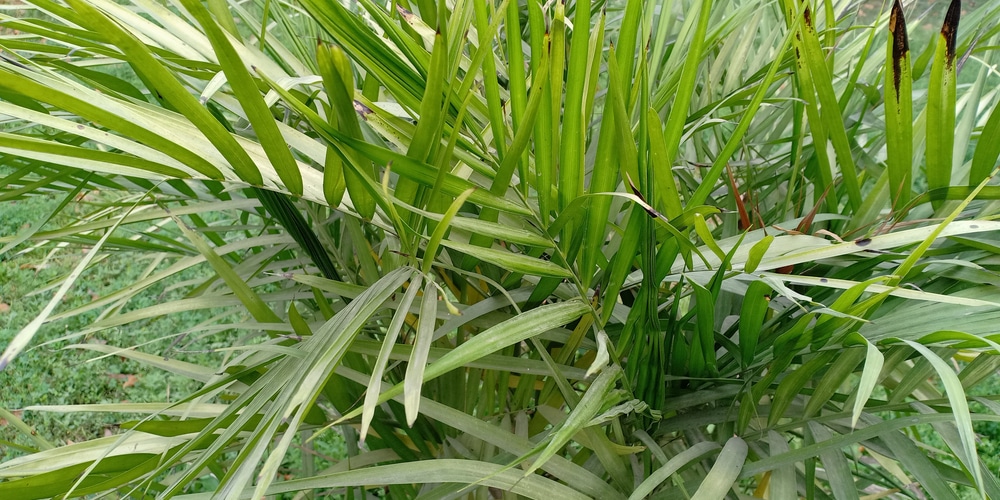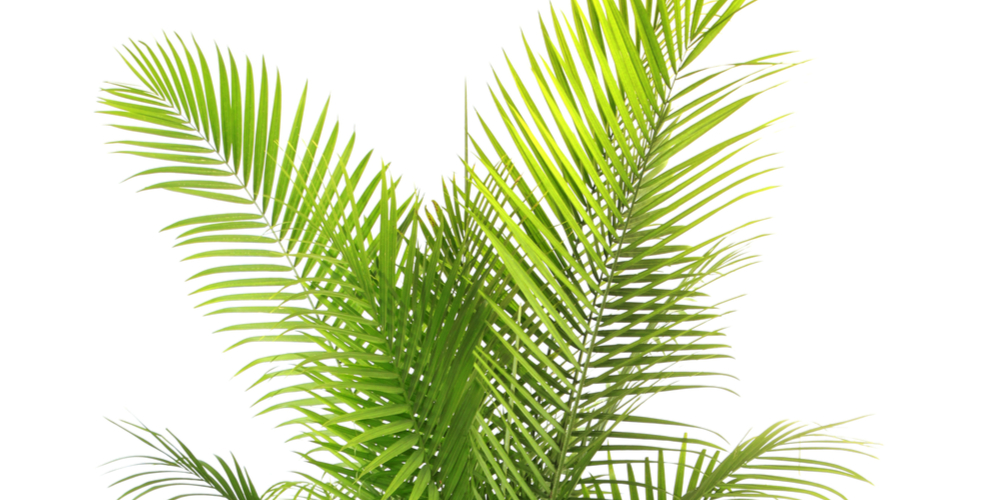Palm plant species come in all kinds of shapes, growing habits, and requirements, but there are two in particular that stand out- the cat palm and the majesty palm. If you’d like to know which is better, cat palm or majesty palm, then you’ve come to the right place.
Let’s do a cat palm vs majesty palm comparison so you’ll know which is the best palm for your house or outdoor landscape.
What is the Difference Between a Cat Palm and a Majesty Palm?

Before anything else, it’s best to identify a cat palm and a majesty palm in terms of species, appearance, and general growing needs.
The Cat Palm is known as Chamaedorea cataractarum and goes by common names such as cataract palm or cascade palm. It’s native to Central America and Southern Mexico, has dark green palm fronds, and tends to favor bright light.
The Majesty Palm, or Ravenea rivularis, also goes by majestic palm and is considered a tree species in the Arecaceae family.
It has dark green and arching leaves and thrives best in a spot that gets full sun. Majesty palm is native to Madagascar, where it’s often seen reaching heights of a hundred feet or greater.
Several notable differences between the majestic palm and the cat palm include frond texture and hardness (cat palms generally have softer stems and form in clumps), and maximum height (majesty palms are often taller and have a wider spread). Both also have subtle nuances in their preferred environments, which we’ll discuss below.
Cat Palm vs Majesty Palm Growing Requirements
Cat Palm Growing Requirements
The Cat Palm is less fussy when it comes to watering, light, and feeding needs compared to the Majesty Palm. The palm species also grow shorter and can live indoors in a brightly-lit environment, which makes it an ideal houseplant.
Soil type is generally the same, with free draining a must for the two palms. As with nearly all palm varieties, you will need to keep cat palms constantly hydrated and placed in a humid environment.
Cascade palms grow in zones 9 to 10, but these plants can be brought indoors in colder seasons. You can expect your cat palm to grow to a maximum height of four to five feet, even when potted as long as you meet the optimal conditions and water at the right time.
When caring for a cat palm you’ll have to keep an eye out for fungal diseases and leaf spots, as well as pests such as mealybugs and spider mites. It’s worth noting that the Majesty Palm can also suffer from the same pests and diseases.
Majesty Palm Growing Requirements
Technically, the Majestic Palm is more suited for outdoor landscapes as it tends to have the same needs as a palm tree. The species needs at least partial sun or anywhere between 4-6 hours of direct light.
This palm variety can grow up to a maximum of six feet in pots, or higher if planted in the yard. Majestic palm roughly has the same watering needs as the cat palm, but you will need to irrigate more if it’s in a warm spot and gets direct sunlight.
Aside from constant watering, the majesty palm can benefit from regular feeding and anti-pest measures. You’ll need to watch out for spider mites and mealybugs and take action to get rid of them immediately.
Cat Palm or Majesty Palm – Which is Better For Your Home?
The cat palm vs majestic palm debate will largely boil down to the question, ‘where do you intend to put your palm plant?’
Majesty palm is more suited for outdoor landscapes and in areas where it can get sunlight, or at least very bright indirect light throughout the day. On the other hand, the cat palm is arguably better as a houseplant as it doesn’t need to be exposed to the sun to thrive.
The Majesty palm is still a viable houseplant though, even if it is potted and doesn’t have access to full sun. However, the palm species tend to be fussier than the cat palm, and you’ll have an easier and more enjoyable time with a cat palm as your indoor plant. However, if you like a challenge then the majestic palm is a viable houseplant option.

